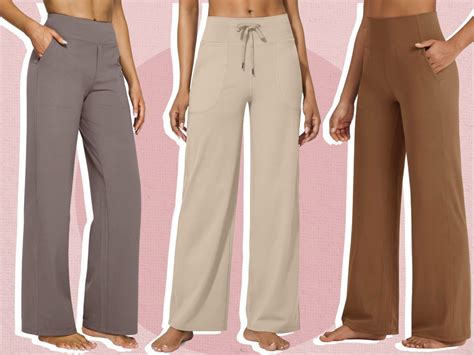
Ragdolls and Maine Coons, two of the most popular and beloved domestic cat breeds, faced off in a virtual “breed showdown” that highlighted their distinctive traits and endearing qualities, captivating cat enthusiasts and sparking lively debate over which breed reigns supreme. While no actual claws were drawn, the online discussion ignited a passionate comparison of their temperaments, physical attributes, grooming needs, and overall suitability as family pets, underscoring the unique appeal of each breed.
The friendly rivalry between Ragdoll and Maine Coon aficionados reflects a broader appreciation for the diverse characteristics that make each breed special. Both breeds consistently rank high in popularity surveys conducted by organizations such as the Cat Fanciers’ Association (CFA), testament to their widespread appeal as companion animals. The online “showdown,” while lighthearted in nature, provided a platform for owners and breeders to showcase the virtues of their preferred breed and educate prospective cat owners about the nuances of Ragdoll and Maine Coon ownership.
The comparison often begins with the breeds’ physical appearances. Maine Coons are known for their large size; they are one of the largest domestic cat breeds, with males typically weighing between 13 and 18 pounds, and females weighing between 8 and 12 pounds. Some Maine Coons can even exceed these weights. They possess a distinctive shaggy coat, a bushy tail, and prominent tufts of fur on their ears and paws, contributing to their rugged and majestic appearance. According to the CFA breed standard, the Maine Coon should have a “long, flowing coat” and a “substantial bone structure.”
In contrast, Ragdolls are also a large breed, though generally slightly smaller than Maine Coons. Male Ragdolls typically weigh between 12 and 20 pounds, while females weigh between 8 and 15 pounds. Ragdolls are distinguished by their semi-long, silky coat, which lacks the dense undercoat of the Maine Coon. This makes them less prone to matting and easier to groom. Their most defining feature is their striking blue eyes and pointed coloration, a trait they share with Siamese and other related breeds. The CFA describes the Ragdoll as having a “sweet expression” and a “gentle demeanor.”
Beyond physical attributes, temperament plays a significant role in the breed comparison. Ragdolls are renowned for their docile and affectionate nature, often going limp when held, hence their name. They are known to be particularly good with children and other pets, making them ideal family companions. “Ragdolls are known for their laid-back and loving personalities,” notes the Yahoo! Lifestyle article. They are often described as “puppy-like” in their behavior, following their owners around the house and seeking attention.
Maine Coons, while also affectionate, tend to be more independent and playful. They are intelligent and curious cats, known for their problem-solving abilities and their love of interactive toys. Maine Coons are often described as “gentle giants” due to their large size and amiable nature. They are generally good with children and other pets, but they may be more assertive than Ragdolls. The Maine Coon breed standard emphasizes their “intelligence and trainability,” noting that they are “adaptable and good-natured.”
Grooming requirements are another key consideration for prospective owners. Maine Coons, with their dense, shaggy coats, require regular brushing to prevent matting and tangles. Owners should aim to brush their Maine Coons several times a week, and professional grooming may be necessary periodically. Ragdolls, with their less dense coats, require less frequent brushing, typically once or twice a week. However, regular grooming is still important to maintain their coat’s health and appearance.
Health concerns also differ between the two breeds. Maine Coons are prone to certain genetic health problems, including hypertrophic cardiomyopathy (HCM), a heart condition, and hip dysplasia. Reputable breeders screen their cats for these conditions to minimize the risk of passing them on to their offspring. Ragdolls are also susceptible to HCM, as well as polycystic kidney disease (PKD). Genetic testing is available for both conditions, and responsible breeders prioritize the health and well-being of their cats.
The cost of acquiring a Ragdoll or Maine Coon can vary depending on factors such as the breeder’s reputation, the cat’s pedigree, and its show potential. Generally, both breeds are relatively expensive compared to mixed-breed cats, reflecting the demand for these popular breeds and the costs associated with responsible breeding practices. Prospective owners should be prepared to pay several hundred to several thousand dollars for a well-bred Ragdoll or Maine Coon kitten.
Ultimately, the choice between a Ragdoll and a Maine Coon comes down to personal preference and lifestyle. Both breeds offer unique qualities and make wonderful companions. Ragdolls are ideal for those seeking a docile and affectionate lap cat, while Maine Coons are better suited for those who prefer a more playful and independent companion. Careful consideration of these factors will help prospective owners choose the breed that best fits their needs and expectations.
The online “showdown” served as a reminder of the diverse range of cat breeds available and the importance of choosing a breed that aligns with one’s lifestyle and preferences. Whether one prefers the laid-back charm of the Ragdoll or the rugged appeal of the Maine Coon, the world of cats offers something for everyone. The friendly competition between these two beloved breeds only serves to highlight the unique qualities that make each of them so special.
The article highlights the increasing popularity of both breeds, fueled by social media and online communities dedicated to cat lovers. Platforms like Instagram and Facebook have become hubs for sharing photos and stories of Ragdolls and Maine Coons, further contributing to their appeal. The article suggests that the breeds’ gentle temperaments and striking appearances have made them particularly well-suited for the role of “internet celebrity cats,” further boosting their popularity.
The rise of pet adoption and rescue organizations has also played a role in the increased awareness of different cat breeds. Many shelters and rescues now feature breed-specific adoption programs, making it easier for prospective owners to find Ragdolls and Maine Coons in need of homes. This trend reflects a growing emphasis on responsible pet ownership and the importance of providing loving homes for all animals.
The article also touches on the ethical considerations surrounding cat breeding. Responsible breeders prioritize the health and well-being of their cats, conducting genetic testing and providing proper care and socialization. However, unethical breeding practices can lead to health problems and behavioral issues. Prospective owners are encouraged to do their research and choose breeders who adhere to ethical standards.
The “Ragdoll vs. Maine Coon” debate is not just about aesthetics and temperament; it also reflects a deeper connection between humans and animals. Cats have long been valued for their companionship, their ability to reduce stress, and their role as members of the family. The popularity of Ragdolls and Maine Coons is a testament to the enduring bond between humans and their feline friends.
In conclusion, the online “breed showdown” between Ragdolls and Maine Coons underscores the unique appeal of these two popular cat breeds. While they differ in physical appearance, temperament, and grooming requirements, both breeds offer companionship and affection to their owners. The choice between a Ragdoll and a Maine Coon ultimately depends on individual preferences and lifestyle, but both breeds are sure to bring joy and companionship to any cat-loving home.
The discussion also touched on the evolving role of cats in contemporary society. Once primarily viewed as independent creatures, cats are increasingly being recognized as integral members of the family, deserving of the same level of care and attention as any other pet. This shift in perception has led to a greater emphasis on providing cats with enrichment, mental stimulation, and high-quality nutrition.
The article implicitly acknowledges the economic impact of the cat industry, which includes breeders, groomers, veterinarians, pet food manufacturers, and a wide range of other businesses. The popularity of breeds like Ragdolls and Maine Coons contributes to the growth of this industry, creating jobs and supporting local economies.
The comparison between Ragdolls and Maine Coons also highlights the broader diversity within the feline world. From sleek Siamese to fluffy Persians, the cat family encompasses a wide range of breeds, each with its own unique characteristics and appeal. This diversity adds to the richness and complexity of the human-animal bond, providing opportunities for people to connect with animals that resonate with their individual preferences and lifestyles.
The online debate ultimately underscores the subjective nature of pet ownership. What one person values in a cat may differ from what another person values. Some may prioritize a cat’s affectionate nature, while others may prefer a more independent and playful companion. The “Ragdoll vs. Maine Coon” discussion serves as a reminder that there is no single “best” breed; the ideal cat is the one that best fits the individual’s needs and expectations.
The article also indirectly addresses the issue of pet overpopulation. While Ragdolls and Maine Coons are popular breeds, there are countless mixed-breed cats in shelters and rescues awaiting adoption. Prospective owners are encouraged to consider adopting a cat from a shelter or rescue before purchasing a purebred kitten. Adoption not only saves a life but also helps to reduce pet overpopulation and supports the important work of animal welfare organizations.
The “Ragdoll vs. Maine Coon” debate can be seen as a microcosm of the broader discussions surrounding pet ownership, animal welfare, and the human-animal bond. These discussions are increasingly taking place online, where cat lovers can connect with one another, share information, and advocate for the well-being of cats around the world.
The article’s focus on the characteristics of Ragdolls and Maine Coons also highlights the importance of understanding a breed’s specific needs and tendencies. Different breeds have different energy levels, grooming requirements, and health predispositions. Prospective owners should research these factors before bringing a cat into their home to ensure that they can provide the appropriate care and support.
The comparison also touches on the role of genetics in determining a cat’s physical and behavioral traits. Breeders use selective breeding techniques to enhance certain characteristics, such as coat color, eye color, and temperament. However, genetics can also play a role in the development of health problems. Responsible breeders prioritize genetic testing to minimize the risk of passing on inherited diseases.
The “Ragdoll vs. Maine Coon” discussion is not just about comparing two breeds; it’s also about celebrating the unique qualities that make each cat an individual. Every cat has its own personality, quirks, and preferences. The human-animal bond is built on these individual connections, creating a relationship that is both rewarding and fulfilling.
The article implicitly acknowledges the growing trend of treating pets as members of the family. This trend has led to an increased demand for high-quality pet food, veterinary care, and pet-related products and services. The “Ragdoll vs. Maine Coon” debate reflects this trend, as owners seek to provide the best possible care for their beloved feline companions.
The discussion also touches on the importance of socialization in shaping a cat’s behavior. Kittens who are properly socialized from a young age are more likely to be friendly, confident, and well-adjusted. Breeders and owners should provide kittens with opportunities to interact with people, other animals, and a variety of environments.
The “Ragdoll vs. Maine Coon” debate serves as a reminder that pet ownership is a responsibility, not just a privilege. Cats require food, water, shelter, veterinary care, and plenty of love and attention. Prospective owners should be prepared to commit to providing these things for the lifetime of their cat.
The article’s focus on the popularity of Ragdolls and Maine Coons also highlights the role of trends in shaping consumer preferences. Breed popularity can fluctuate over time, influenced by factors such as media portrayals, celebrity endorsements, and online communities. However, responsible pet ownership should be based on individual needs and preferences, not just on trends.
The discussion also touches on the ethical considerations surrounding the purchase of pets from breeders. Puppy mills and unethical breeders often prioritize profit over the health and welfare of their animals. Prospective owners should be careful to choose breeders who adhere to ethical standards and prioritize the well-being of their cats.
The “Ragdoll vs. Maine Coon” debate is not just about comparing two breeds; it’s also about promoting responsible pet ownership and animal welfare. By educating prospective owners about the specific needs and tendencies of different breeds, we can help to ensure that all cats receive the care and attention they deserve.
The article implicitly acknowledges the growing awareness of the importance of mental stimulation for cats. Cats need opportunities to play, explore, and engage their natural hunting instincts. Owners can provide mental stimulation through interactive toys, puzzle feeders, and environmental enrichment.
The discussion also touches on the role of veterinary care in maintaining a cat’s health and well-being. Regular checkups, vaccinations, and preventative care can help to prevent health problems and ensure that cats live long and healthy lives.
The “Ragdoll vs. Maine Coon” debate serves as a reminder that pet ownership is a lifelong commitment. Cats can live for 15 years or more, and owners should be prepared to provide care for their cats throughout their lives.
The article’s focus on the characteristics of Ragdolls and Maine Coons also highlights the importance of understanding a breed’s specific needs and tendencies. Different breeds have different energy levels, grooming requirements, and health predispositions. Prospective owners should research these factors before bringing a cat into their home to ensure that they can provide the appropriate care and support.
The comparison also touches on the role of genetics in determining a cat’s physical and behavioral traits. Breeders use selective breeding techniques to enhance certain characteristics, such as coat color, eye color, and temperament. However, genetics can also play a role in the development of health problems. Responsible breeders prioritize genetic testing to minimize the risk of passing on inherited diseases.
The online “showdown” is a testament to the power of online communities to connect people with shared interests. Cat lovers around the world can come together to share their passion for cats, exchange information, and support one another.
Frequently Asked Questions (FAQ):
1. What are the main differences between Ragdolls and Maine Coons?
Ragdolls and Maine Coons differ in several key aspects. Maine Coons are generally larger with a shaggy, dense coat, while Ragdolls have a semi-long, silky coat and are known for their striking blue eyes and pointed coloration. Temperamentally, Ragdolls are typically more docile and affectionate, often going limp when held, whereas Maine Coons are more independent and playful. Grooming requirements also vary, with Maine Coons needing more frequent brushing due to their denser coat.
2. Which breed is better for families with children and other pets?
Both Ragdolls and Maine Coons are generally good with children and other pets. However, Ragdolls are often considered to be particularly well-suited for families due to their gentle and tolerant nature. Maine Coons, while also amiable, may be more assertive and require early socialization to ensure they get along well with other animals. The best choice depends on the specific dynamics of the household and the individual cat’s personality.
3. What are the common health problems associated with each breed?
Maine Coons are prone to hypertrophic cardiomyopathy (HCM) and hip dysplasia. Ragdolls are also susceptible to HCM, as well as polycystic kidney disease (PKD). Reputable breeders screen their cats for these conditions to minimize the risk of passing them on to their offspring. Prospective owners should inquire about the breeder’s health testing practices.
4. How much does it cost to acquire a Ragdoll or Maine Coon kitten?
The cost of a Ragdoll or Maine Coon kitten can vary depending on factors such as the breeder’s reputation, the cat’s pedigree, and its show potential. Generally, both breeds are relatively expensive compared to mixed-breed cats, with prices ranging from several hundred to several thousand dollars.
5. What are the grooming requirements for Ragdolls and Maine Coons?
Maine Coons require regular brushing, several times a week, to prevent matting and tangles due to their dense, shaggy coat. Ragdolls, with their less dense coats, require less frequent brushing, typically once or twice a week. Regular grooming is still important to maintain their coat’s health and appearance.









